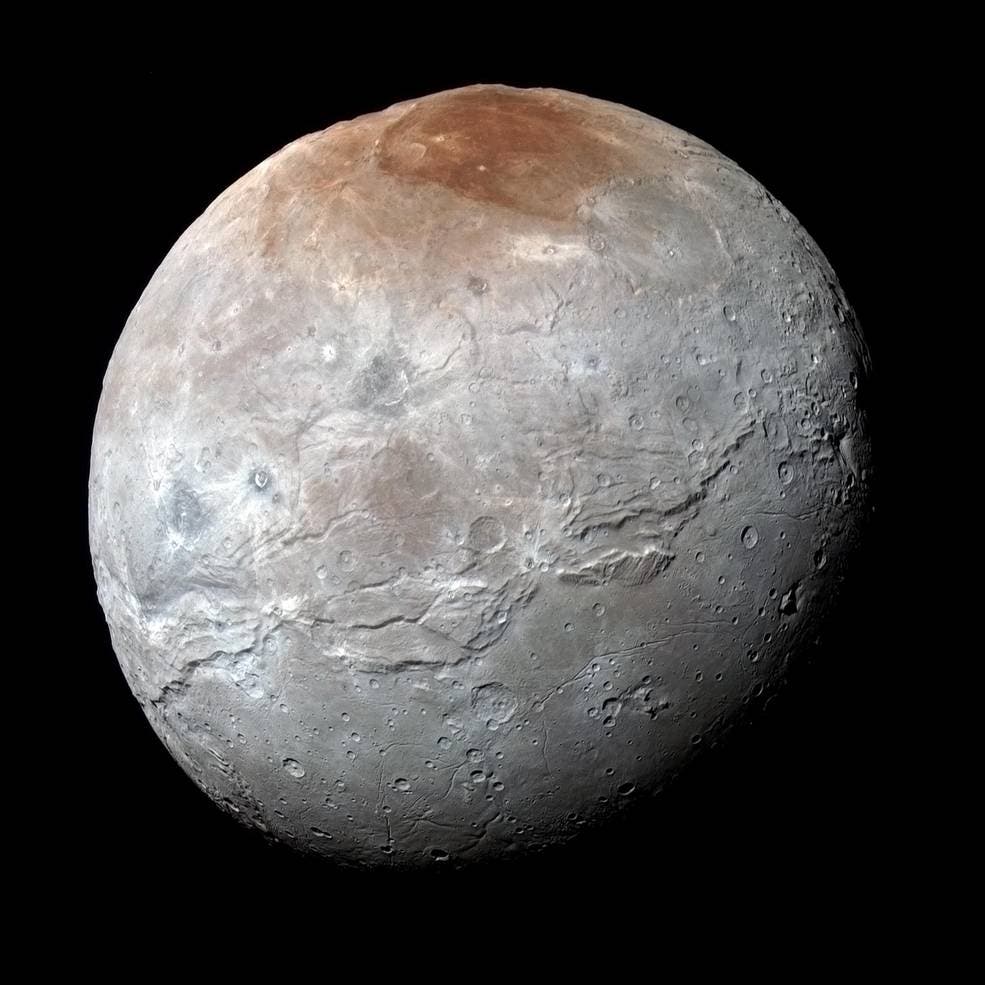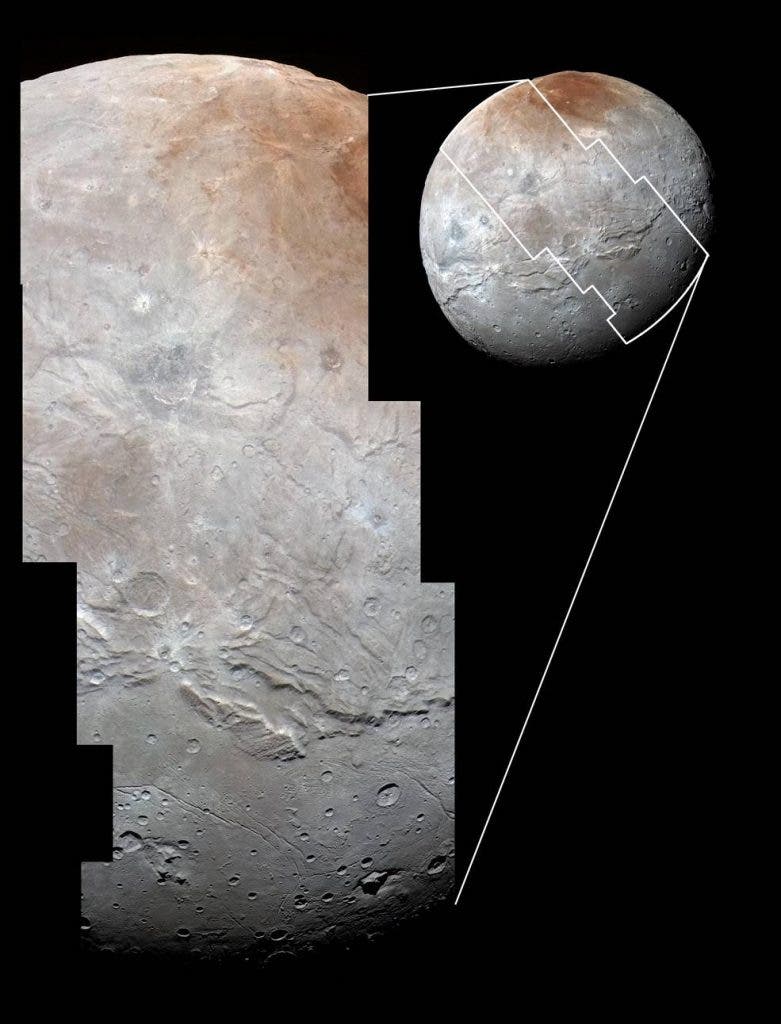NASA’s New Horizons shuttle wasn’t only taking mind blowing photos of Pluto, it was also peeking at Pluto’s moons, especially Charon – the largest one. The latest set of images analyzed by NASA researchers revealed quite a busy past, filled with violence and geologic activity.

Credits: NASA/JHUAPL/SwRI
Charon is the largest and best studied moon of Pluto. It is a very large moon in comparison to its parent body, Pluto, and some astronomers have argued that Charon itself should be considered a dwarf planet like Pluto, and not a moon. nlike Pluto’s surface, which is composed of nitrogen and methane ices, Charon’s surface appears to be dominated by the less volatile water ice. The south polar area is dominated by a very large dark area informally dubbed “Mordor” by the New Horizons team. Aside from Mordor, however, New Horizons imaged very few other impact craters on Charon and found a youthful surface, adding support to the above theory that Charon is geologically active and thus probably differentiated (meaning it has a crust, a mantle and a core).
“We thought the probability of seeing such interesting features on this satellite of a world at the far edge of our solar system was low,” said Ross Beyer, an affiliate of the New Horizons Geology, Geophysics and Imaging (GGI) team from the SETI Institute and NASA Ames Research Center in Mountain View, California, “but I couldn’t be more delighted with what we see.”
For starters, the features are incredibly visible – you can see craters, ridges, and even fractures on its surface, but the most spectacular feature is definitely a huge canyon. The canyon stretches more than 1,000 miles (1,600 kilometers) across the entire face of Charon and likely around onto Charon’s far side, four times larger than the Grand Canyon, indicating a huge geologic upheaval in Charon’s past.
“It looks like the entire crust of Charon has been split open,” said John Spencer, deputy lead for GGI at the Southwest Research Institute in Boulder, Colorado. “With respect to its size relative to Charon, this feature is much like the vast Valles Marineris canyon system on Mars.”

Credits: NASA/JHUAPL/SwRI
They also found that the moon’s southern part has way fewer craters than the northern part. The smoothness of the plains, as well as their grooves and faint ridges, are clear signs of wide-scale resurfacing. This could be the effect of a kind of cold volcanic activity, called cryovolcanism.
“The team is discussing the possibility that an internal water ocean could have frozen long ago, and the resulting volume change could have led to Charon cracking open, allowing water-based lavas to reach the surface at that time,” said Paul Schenk, a New Horizons team member from the Lunar and Planetary Institute in Houston.
Right now, the existence (and extent) of geological features on Charon has taken both astronomers and geologists by surprise, but they couldn’t be more thrilled. The good news is that even more pictures of Charon are currently being sent by New Horizons, and some of them will come in even better resolution. We’ll keep you posted as that happens.

Credits: NASA/JHUAPL/SwRI
“I predict Charon’s story will become even more amazing!” said mission Project Scientist Hal Weaver, of the Johns Hopkins University Applied Physics Laboratory in Laurel, Maryland.


